|
|
Reading assignment |
|
|
Movie shown |
|
|
Handout |
|
|
Online document |
|
|
Computer demonstration |
|
|
Student Presentation |
1. (Tu 96-08-27) Usual teaching staff (Prof. Brian Barsky and Dan Garcia)
|
|
|---|---|
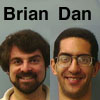
|
Introduction, student queries. We looked at the post-its from previous years and discussed reasons that made them work or not work. We discussed the difference between camera dolly motion and zooming, and what a scene and shot are in film contexts.
|
2. (Th 96-08-29) Usual teaching staff
|
|

|
The traditional animation process, post-it student ideas, differences between computer animation and traditional animation (what's easier to do in one domain and more difficult in the other). Motion Specification, linear interpolation and more general interpolation.
|
3. (Tu 96-09-03) Usual teaching staff
|
|

|
We will look at student post-it animations, and talked about Raster Architectures and Color Theory
UNIX and Emacs
|
4. (Th 96-09-05) Usual teaching staff
|
|

|
We will continue to talk about Raster Architectures and Color Theory.
|
5. (Tu 96-09-10) Usual teaching staff
|
|

|
Forward and Inverse Kinematics for motion specifications and the
constraints that would emerge to make a realistic walking figure.
|
6. (Th 96-09-12) Dan Wexler (PDI)
|
|

|
I'll be speaking about our recent work on the Arrival.
The talk will cover the more detailed lighting aspects
of our work. I will descuss the texture mapping process
which we use to avoid texture map stretching, and the
attention that is paid to film effects like bloom and
grain. There is a breakdown of the shot that shows
the steps from an initial lighting setup to the final
render. I will talk about how we match the lighting on
a live action shot so the computer generated imagery
fits with the plate shot on film.
|
7. (Tu 96-09-17) Usual teaching staff
|
|

|
We look at how to do the next assignment, morphing yourselves into each other. We talk about polygons and texture mapping.
|
8. (Th 96-09-19) Linda Branagan (SIGGRAPH'96 Electronic Theatre Chair)
|
|

|
Computer animations can accomplish dozens of things: they can tell stories,
explain concepts, explore spaces, and create moods. But these with
these widely different goals come different criteria for quality -- what's
vital for one type of animation may be unimportant for another. Using
examples from recent SIGGRAPH conferences, Linda will explain what
makes animations good, and she'll also describe common pitfalls that
student animators should be careful to avoid.
|
9. (Tu 96-09-24) Usual teaching staff
|
|

|
We talk about the basics of a 3D software program: Modeling, Hierarchies, Textures, Lighting, Animation using the example program Infini-D 3.2 on the Macintosh.
|
10. (Th 96-09-26) Mike Collery (PDI)
|
|

|
|
11. (Tu 96-10-01) Usual teaching staff
|
|

|
We teach how to use more Mac tools
|
12. (Th 96-10-03) Stefen M. Fangmeier (ILM)
|
|

|
I will talk about our work on Twister as an example of how computer
graphics are used in the Visual Effects business. I will show one video that
includes the ILM demo reel, some tornado reference video that we
looked at during our work on the effects and some examples of shots
from Twister that illustrate what some of the challenges were.
|
13. (Tu 96-10-08) John Hughes (Brown)
|
|

|
I'll be describing SKETCH, a system for rapid conceptual modeling of
simple 3D geometries, intended to be used when the final idea of
something being modeled is still vague and imprecise. SKETCH uses
gestural inputs and deliberately "sketchy" rendering to try to
achieve the informality and fluidity of paper-and-pencil sketching.
I'll show some videotape of the system at work, describe some
potential applications, and discuss a little bit of "how it's
done."
So far, SKETCH is just a prototype and has not been used in any production
work. But major modeling-software developers are collaborating with
use already to try to integrate it into more conventional modeling
software. I'll also discuss some ideas about how it might fit into
such software, and where the project might be headed in the future.
|
14. (Th 96-10-10) Ronen Barzel (Pixar)
|
|

|
This talk describes how the ropes, cords, springs, and
"Slinky Dog" in Toy Story were modeled and animated. To
give complete creative control to the animators, no
physical simulation nor other procedural animation was
used; the models were animated manually using keyframe
systems. This was made feasible by using an approach in
which wave deformation is layered over directly
controlled underlying shape.
|
15. (Tu 96-10-15) Usual teaching staff
|
|

|
We learn how to use Infini-D some more. We learn how to double-click on events and edit the details of an object, how to change the composition of a surface so that the back does not contain the same as a front (like in the earlier animations), how to edit a spline object and animate it over time, how to change lights and add more lights, why not to render in ray trace mode (but only use best and low anti-aliasing), how to change the display of the key-frame window, how to animate using splines (vs. linear key-frame interpolation), how to use the paths instead of just key frames, how to use the 'auto-banking' and reverse animation assistant, and we discussed the next assignment. We discuss HW #7 due 10/22 : Create a single 465x348 picture using advanced features of Infini-D and put it on your web page, i.e. multiple lights, shape editing, and interesting geometry
|
16. (Th 96-10-17) Oren Jacob (Pixar)
|
|
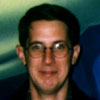
|
Special effects might be considered a somewhat strange topic to discuss
in regards to a completely computer generated movie. In one view, all
of Toy Story was a special effect. The pixels of the film all came out
of a compuer, didn't they?. But yet, the Academy of Motion Picture Arts
and Sciences did not see fit to nominate us in that category.
We view the effects work done on Toy Story in a similar vein. Our definition of a special effect was, losely, a process done on or an element added to the footage that did not fit neatly into the categories of either character, prop, or set. It is undoubtedly easier to define what we thought of as a special efffects by example.
This talk will focus both on the definition of effects within the
greater scope of a computer generated film as well as descriptions of
how several effects in the film, including raindrops, smoke contrails,
and lighting, were actually accomplished. A discussion about the difference
between modelling, animating, shading, and lighting and how those various
departments interact in the effects production process will also be
presented.
|
17. (Tu 96-10-22) Usual teaching staff
|
|

|
The U.C. Theatre is showing
Spike and Mike's Sick and Twisted Festival of Animation daily: 4:30pm, 7pm, 9:30pm. The show runs from 96-10-18 to 96-10-24. We discuss rotoscoping, body suits, and other tools for motion capture. We discuss HW #8 due 10/29 : Create a story and storyboard it (we'll choose the top 4 for our final projects)
|
18. (Th 96-10-24) Darwyn Peachey (Pixar)
|
|
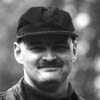
|
Images and Image Processing in CG Animation Production Films such as Pixar's "Toy Story" consist completely of 3D animated computer graphics. Although much of the work takes place in the 3D realm of models and motion, there are significant and interesting problems to be solved in the 2D realm in which rendered images are modified, composited, and recorded on video and film. In particular, problems related to the color rendition of different display technologies are especially difficult to solve. This presentation will describe the imaging problems we have encountered and discuss the ways that Pixar dealt with them in "Toy Story" and other productions. Darwyn Peachey is Director of the Studio Tools department at Pixar. He has worked on animation and rendering software at Pixar since 1988, and spent four years working on "Toy Story". Peachey received M.Sc. and B.Sc. degrees in computer science from the University of Saskatchewan in Canada. He has published research papers in graphics, operating systems, and artificial intelligence, and has spoken in seven SIGGRAPH courses. He was a member of the paper selection committees of SIGGRAPH 92 and 93, and Graphics Interface 86, 88 (as Program Chairman), 89, 90, 91, and 95. In 1993, Peachey and six other Pixar employees received a Academy Award for the RenderMan rendering system from the Academy of Motion Picture Arts and Sciences. |
19. (Tu 96-10-29) Usual teaching staff
|
|

|
(Toy Story is available on video today!)
We see the rest of the medialab video and heard students present their ideas for final projects.
|
20. (Th 96-10-31) Laurence Arcadias (Independent Animator)
|
|
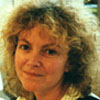
|
(see her Interactive Works)
She shows her work, starting from animations she directed when she was
in France to movies she did in the US. She explains how she started as a
traditional animator, how she got involved in computers and now, why she is
doing more interactive animation. She talks about different issues with
the new technologies and how it may influence her work in the future.
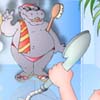 "TOILETTE-ZONE" - This is a short movie financed by A2 and C.N.C. (French National Center of Cinema.)
I directed it, I created the
characters and the story and animated some sequences mostly at the
beginning and I produced it with my company Amorce films. "TOILETTE-ZONE" - This is a short movie financed by A2 and C.N.C. (French National Center of Cinema.)
I directed it, I created the
characters and the story and animated some sequences mostly at the
beginning and I produced it with my company Amorce films.
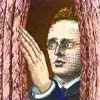 "THE DONOR PARTY" - This movie was done in Apple's Advanced
Technology Group (ATG) with
"Inkwell" and sponsored by "French Minister of Foreign Affairs". Only
one picture was created for each character per scene; outlines for the
characters were then animated and used to warp the characters for
animation. So far this movie has been shown in SIGGRAPH 93, MONTREAL:
IMAGES DU FUTUR, BERLIN INTERFILM FESTIVAL and ADELAIDE FESTIVAL in
AUSTRALIA. LOW RES FILM FESTIVAL. HOTWIRED. Released by VOYAGER with the
winners of the contest: "NEW VOICES NEW VISION" "THE DONOR PARTY" - This movie was done in Apple's Advanced
Technology Group (ATG) with
"Inkwell" and sponsored by "French Minister of Foreign Affairs". Only
one picture was created for each character per scene; outlines for the
characters were then animated and used to warp the characters for
animation. So far this movie has been shown in SIGGRAPH 93, MONTREAL:
IMAGES DU FUTUR, BERLIN INTERFILM FESTIVAL and ADELAIDE FESTIVAL in
AUSTRALIA. LOW RES FILM FESTIVAL. HOTWIRED. Released by VOYAGER with the
winners of the contest: "NEW VOICES NEW VISION"
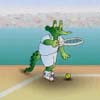 "TENNIS-RACKET" -
It is the movie I first did at Apple
with "Inkwell"
which is an experimental 2.5-dimension animation program built in
ATG Graphics
Group. "TENNIS-RACKET" -
It is the movie I first did at Apple
with "Inkwell"
which is an experimental 2.5-dimension animation program built in
ATG Graphics
Group.
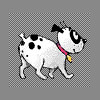 "SCREEN SAVERS" : "BAD DOG" -
This is my work when I was in Berkeley Systems.
I created and animated Chameleons and Bad Dog and worked with Dana Muise
on Mike's House "SCREEN SAVERS" : "BAD DOG" -
This is my work when I was in Berkeley Systems.
I created and animated Chameleons and Bad Dog and worked with Dana Muise
on Mike's House
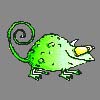 "SCREEN SAVERS" : "OFFENSIVE
CHAMELEONS" - First loop I did for "Totally Twisted Screen
Saver". It was judged too offensive by the management. Check on
"Chameleons After Dark" files for final version. "SCREEN SAVERS" : "OFFENSIVE
CHAMELEONS" - First loop I did for "Totally Twisted Screen
Saver". It was judged too offensive by the management. Check on
"Chameleons After Dark" files for final version.
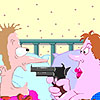 "INTERACTIVE ANIMATION" :
"I LOVE YOU": That was the fee to attend a Joe's Digital Dinner
Event for Valentine Day: $10 or a Digital Valentine. It's interactive,
just press any key on the Keyboard. "INTERACTIVE ANIMATION" :
"I LOVE YOU": That was the fee to attend a Joe's Digital Dinner
Event for Valentine Day: $10 or a Digital Valentine. It's interactive,
just press any key on the Keyboard.
|
21. (Tu 96-11-05) Usual teaching staff
|
|

|
We continue to look at automatic motion specification, and think about energy minimization. We learn about wireframe, flat shading, gouraud shading, and what is actually happening when (wire | fast | better | best | ray-tracing) is selected from Infini-D. We talk about what makes for good camera motion, and what is due next week. Due next week is a demonstration that all the objects are created in Infini-D
|
22. (Th 96-11-07) Jeff Light (ILM)
|
|

|
As film effects are driven to dizzying heights of more intense action
and to create more amazing fantasy, the pressure to create convincing
digital stunt doubles is increasing and the technology to make it
possible is becoming more readily available. The use of puppets,
dummies or stunt-persons as stunt doubles has been practiced since the
beginning of movie making. Digital stunt doubles are simply the
logical extension of this idea.
The need for digital stunt doubles is driven by a number of factors. The performance may be too dangerous or impossible for an actor. A shot that requires thousands of extras may be too expensive to shoot with modern financial constraints. Some scenes may already be composed of sufficiently complex synthetic imagery, such that it is simply EASIER to composite a digital character interacting with other elements in a scene. There are daunting obstacles to overcome in the process of creating a digital stunt double. Primarily, it should not call attention to the fact that it's an effect. The modeling, animation and rendering must blend seamlessly with surrounding shots. Often, the switch between live action and the CG double will happen DURING the shot, when the audience is focusing their full attention on the character that is being switched! Modeling and rendering hair, skin and cloth remain difficult obstacles to imitating the look of the original performer. Animating the subtleties of REAL human or animal motion is highly complex. Motion capture or procedural animation approaches may provide partial answers but not a panacea. Since the drive to create an increasing amount of a performance with
a digital character is inexorable, the implications of not simply
supplanting but actually replacing actors, living or dead, raises
important artistic and ethical issues, which I hope we can approach
with wisdom.
|
23. (Tu 96-11-12) Usual teaching staff
|
|

|
We take a class field trip to 111 cory to learn how to use Infini-D's modeler using a bending pencil as demonstration. We take time for each group to show Dan the results of last week's homework assignment - a model of all of the objects in the final project. We discuss the next assignment due 96-11-14 which is to display a picture showing a rendered scene with all the objects in the scene
|
24. (Th 96-11-14) John Berton, Jr. (ILM)
|
|

|
John talked about his background and the history and background of computer graphics, with detailed examples from video.
|
25. (Tu 96-11-19) Usual teaching staff
|
|

|
We take another field trip to the lab to see the animations to date, to talk about details of the next assignment, and to teach how to fake a landscape. |
26. (Th 96-11-21) Pauline Ts'o (Rhythm & Hues)
|
|

|
"The State of the Art": This talk will be an overview of the computer animation and digital effects industry, with emphasis given to comparing and contrasting technical, production, and strategic business approaches of different studios. Also a discussion of the possible future of the industry. |
27. (Tu 96-11-26) Usual teaching staff
|
|

|
We see some of the cutting edge of Computer Animation research and then take our next-to-last field trip to the lab to see how the final projects are doing. |
28. (Th 96-11-28) No class! Thanksgiving holiday. Gobble, gobble.
|
|
29. (Tu 96-12-03) Ralph Guggenheim (Pixar)
|
|
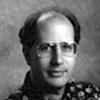
|
'Toy Story', the first fully computer animated feature film ever
made, was produced by Pixar Animation Studios of Richmond, CA. Although
the film is a breakthrough in its use of computer graphics, its popularity
is due to director John Lasseter's emphasis on story and characters. Ralph
Guggenheim, one of the film's producers will talk about the technical and
creative hurdles that Pixar confronted in making this milestone motion
picture.
|
30. (Th 96-12-05) Usual teaching staff
|
|

|
We will summarize the course, suggest ideas for students who want to do more with animation, and see the final animations. |